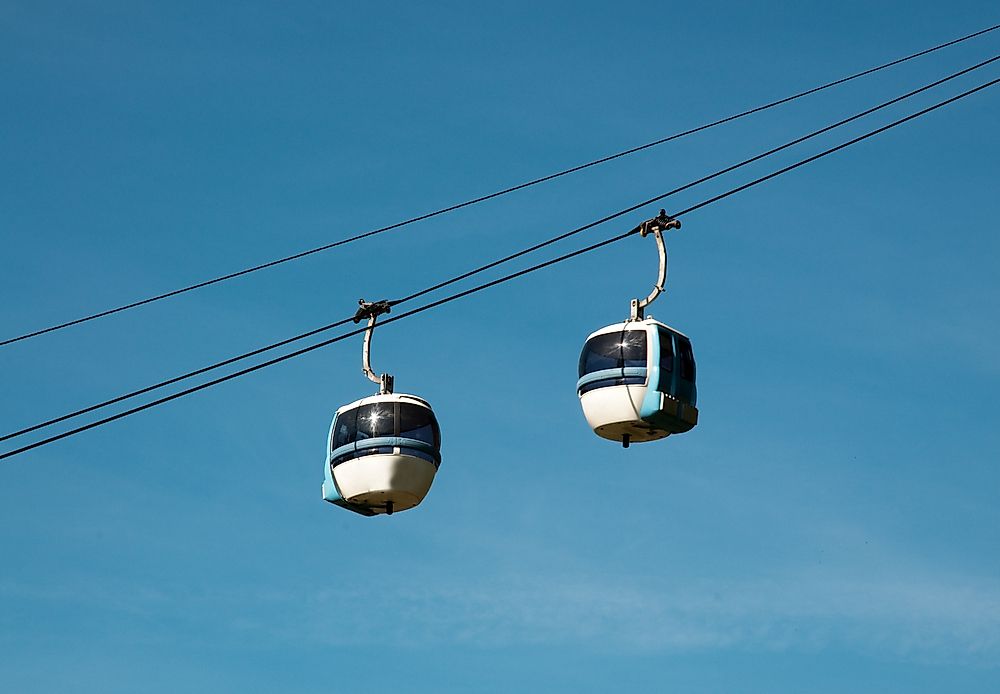The Deadliest Cable Car Disasters In History

6. 1976 Cavalese cable car disaster
The deadliest cable car disaster in history that claimed the lives of forty-three people happened on March 9, 1976, in Italy near the Cavalese ski resort. The incident took place when a cable car was descending down Mt. Cermis, and the steel supporting cable of the cable car broke, dropping the car 660 feet down the mountainside. The cable car skidded through a height of 330 ft before it finally rested on a grassy meadow. The top of the car was completely crushed when the 3-ton overhead carriage assembly banged onto the roof of the car. Forty-three people including 15 children and two cable car attendants died. Only one 14-year-old Milanese girl who was on a school trip survived. Most of the victims of this disaster were West Germans. The cable car carried one French national, 21 Germans, 11 Italian passengers, and 7 Austrians. The inquest revealed that the disaster was caused when high winds caused the moving cables and the stationary cables to cross resulting in one severing the other. The disaster could have been prevented if the automatic train stop safety system was switched on.
5. 1990 Tbilisi Aerial Tramway Accident
20 people lost their lives and 15 were injured during an aerial tramway accident on June 1, 1990, in Soviet Georgia’s capital of Tbilisi. The accident involved two gondolas moving on the ropeway route between Mount Mtatsminda and Rustaveli Avenue. One of the gondolas was moving down the mountain slope and nearing the lower supporting tower whereas the other one was on its way up. For a reason yet undetected, the hauling rope inside the upper gondola’s coupler broke, sending both the gondolas rolling down the slopes. The crash killed four passengers on the lower gondola and the rest on the upper one.
4. 1998 Cavalese Cable Car Disaster
The Dolomites mountain range in Italy was witness to yet another terrifying cable car disaster on February 3, 1998. The disaster happened near the ski resort town of Cavalese and claimed the lives of 20 passengers on board the cable car. The disaster happened when a US Marine Corps aircraft that was flying lower against the regulations cut a cable that was supporting the cable car of the aerial tramway. The cable snap dropped the gondola 260 ft to the ground killing 20 on board. The aircraft crew members were acquitted due to the absence of evidence. Later, it was discovered that one of the crew members had destroyed a tape that contained incriminating evidence pointing to the involvement of the aircraft crew in the disaster.
3. 1999 Saint-Étienne-en-Dévoluy Cable Car Disaster
On July 1, 1999, in Saint-Étienne-en-Dévoluy, a commune in France, a gondola snapped from its cable and fell 80 meters down to the valley’s rocky slopes, killing all 20 people on board. All those who died were French and included astronomers, maintenance workers, construction workers, and technicians.
2. 1983 Singapore Cable Car Disaster
On January 29, 1983, two cable cars of the Singapore Cable Car system plunged 55 meters into the sea killing seven people. The accident happened when a derrick of the Panamanian registered oil-rig named Eniwetok while being towed away got entangled in the cable, running between the Sentosa Station and the Jardine Steps Station, snapping it. Thirteen more passengers were also trapped in four other cable cars running on the line.
1. 2017 Gulmarg Cable Car Disaster
Another one of the deadliest cable car disasters happened in Gulmarg, Jammu and Kashmir, India. A cable car crashed to the ground several feet below when a tree fell on the cable on which the car was running. Seven people including four members of a Delhi family lost their lives in the disaster. Several other cable cars on the line were stranded mid-air with the passengers praying for their safety as the cars swayed dangerously with the wind. The rescuers included Indian army staff, other rescue personnel as well as tour guides, and the common people of the region. All worked hard to save the stranded passengers and calm down the relatives on the ground.











